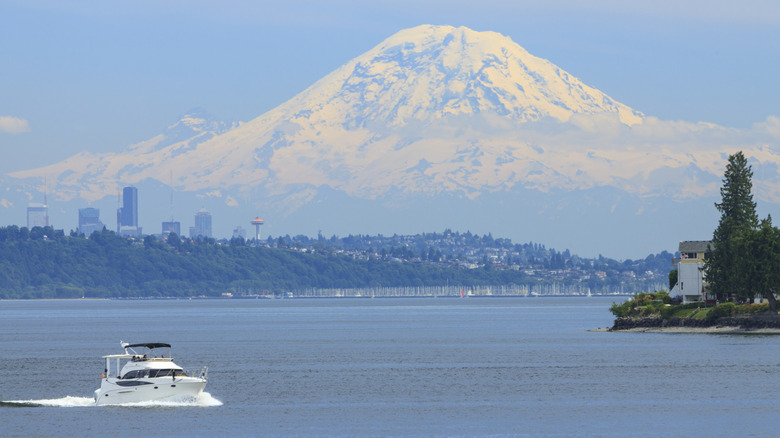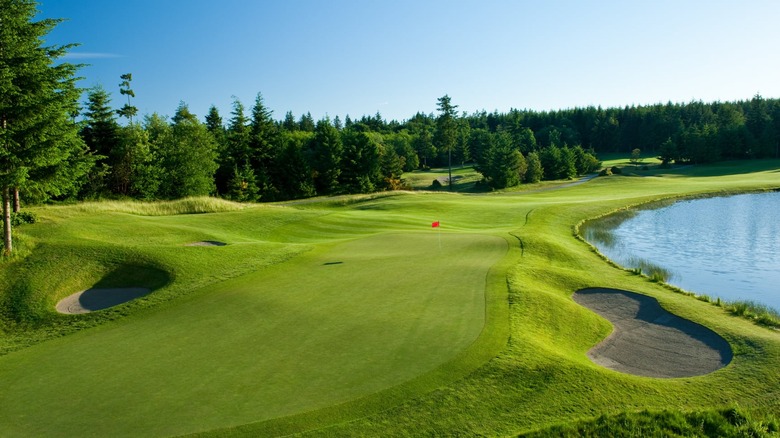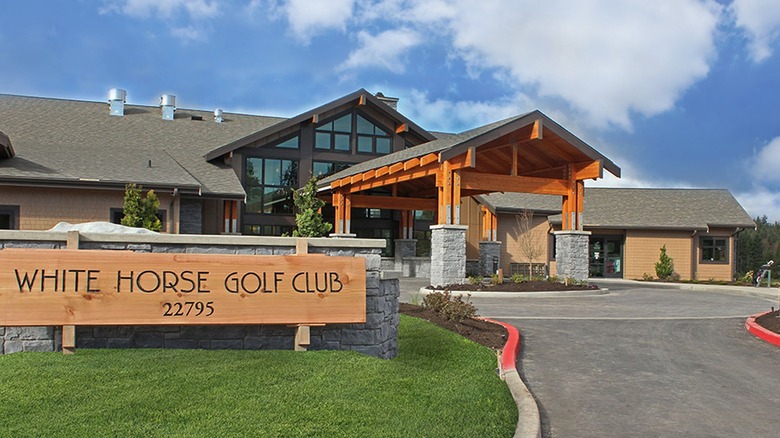Washington's Best Ranked Golf Club Combines Lush Landscapes, Playability, And Wildlife Views
In the Pacific Northwest, the state of Washington has built a reputation as a golf destination for travelers from all over. The unique landscape of the Evergreen State has produced stunning, tree-lined courses in seemingly every corner of the state, including Sahalee Country Club and Aldarra Golf Club. More recently, Washington has showcased major championship caliber courses along the scenic pacific coast like Chambers Bay. Still, one specific track near Seattle — a gateway to many of the state's stunning islands — is a golf escape that continues to be one of the highest ranked in both course prestige and beauty since its introduction.
On the other side of Seattle's East Bay in a town called Kingston, Washington, sits White Horse Golf Club, a golf oasis that is merely a short ferry ride away from the extremely popular and very busy Emerald City. The club has a somewhat tattered history of ownership, a groundbreaking designer, and an unlikely savior that has swooped in to not only preserve but bolster the course's reputation as a crown jewel for golfers in Washington.
White Horse's creation and connections to golf legends
The initial owner of the property was Bob Screen, who had visions of buying a small piece of the property for his daughter's horse, but the idea evolved into the purchase of 450 acres. The inspiration for the golf course came alongside golf club designer Karsten Solheim, a local to the area who was known as the founder of PING Golf and creator of the Solheim Cup. Once the plan for White Horse was in place, the pair turned to Cynthia Dye McGarey, niece of the legendary golf course designer Pete Dye. Cynthia's architectural work and routing on White Horse gave her the honor of being the only solo female designer of a course that would win Golf Digest's "Best New Golf Courses in America" award.
White Horse's beauty from its opening was unquestioned, but course ownership issues left its fate in an early jeopardy just a few years after opening after multiple bank takeovers. A timely purchase of the course from the local Suquamish Tribe led to a rejuvenation into the grounds and facilities that guests see open arriving for their Washington golf adventure.
The Wild Horse golf experience
Upon arriving at White Horse, golfers are immediately greeted by an all grass practice facility so they can get warmed up for their day just like the pros. The Suquamish Tribe's investment into the property shows right off the bat in their lodge style clubhouse that portrays the beauty of the land. Even non-golfers who visit are impressed with the Cedar Ridge Grill's menu options and stunning views. "I don't play golf, but the view from the restaurant is peaceful and beautiful and the food is good too," wrote one visitor on TripAdvisor.
Heading out to the course, it's a more playable version of the initial design but still robust in features. Half the bunkers were removed to soften the conditions of the brutally tough 18 holes, and the fairways were contoured for the average golfer. Still, the course is filled with thick, tree-lined holes waiting to penalize any shot off line. Golfers are bullish on the course conditions, and compliment them in their reviews during even the wettest and coldest of Washington seasons. "Fairways were very nice, greens tough but fair, sand traps were a little difficult due to very coarse 'sand' – more like small gravel," another visitor wrote. "A great test of your skills."
In tune with the serenity of the region, the course boasts a peaceful environment along the Kitsap Peninsula and there are wildlife sightings aplenty on the property. As the White Horse community of homes is set to grow in the coming years, course demand will grow for this Pacific Northwest gem.


